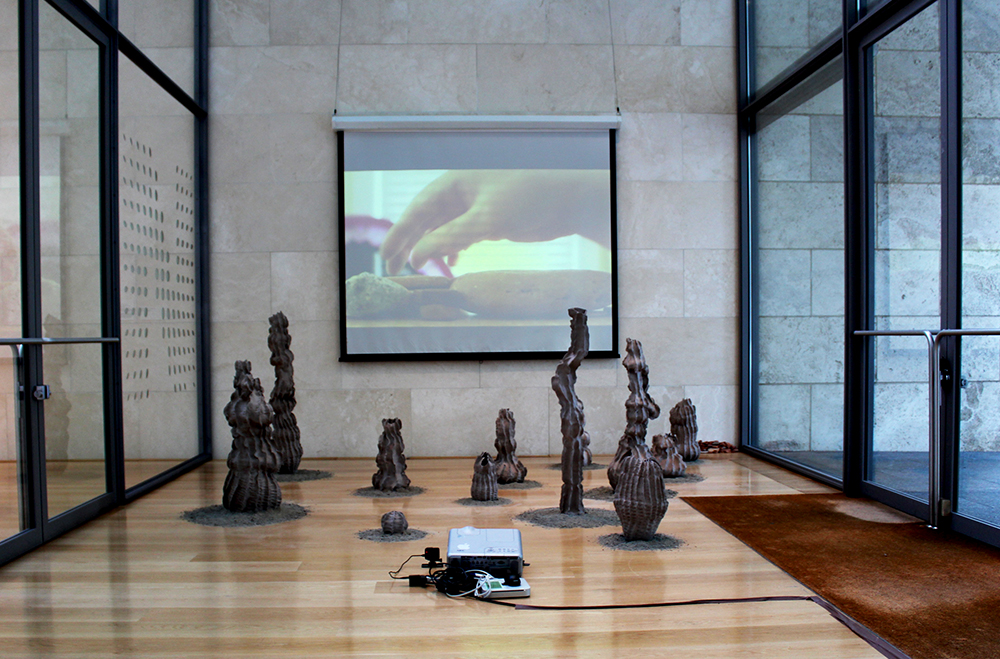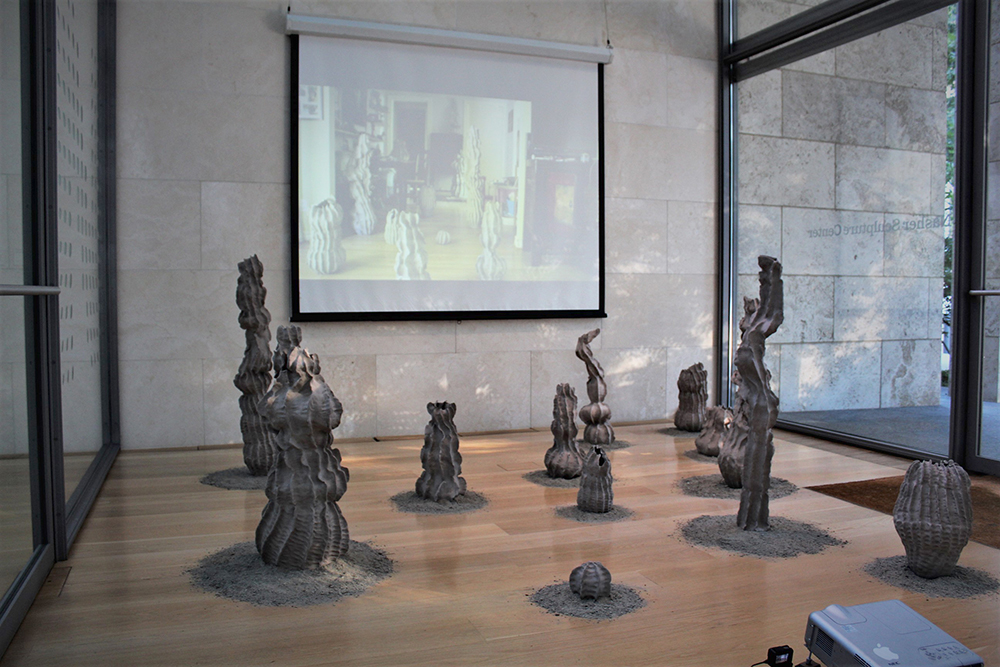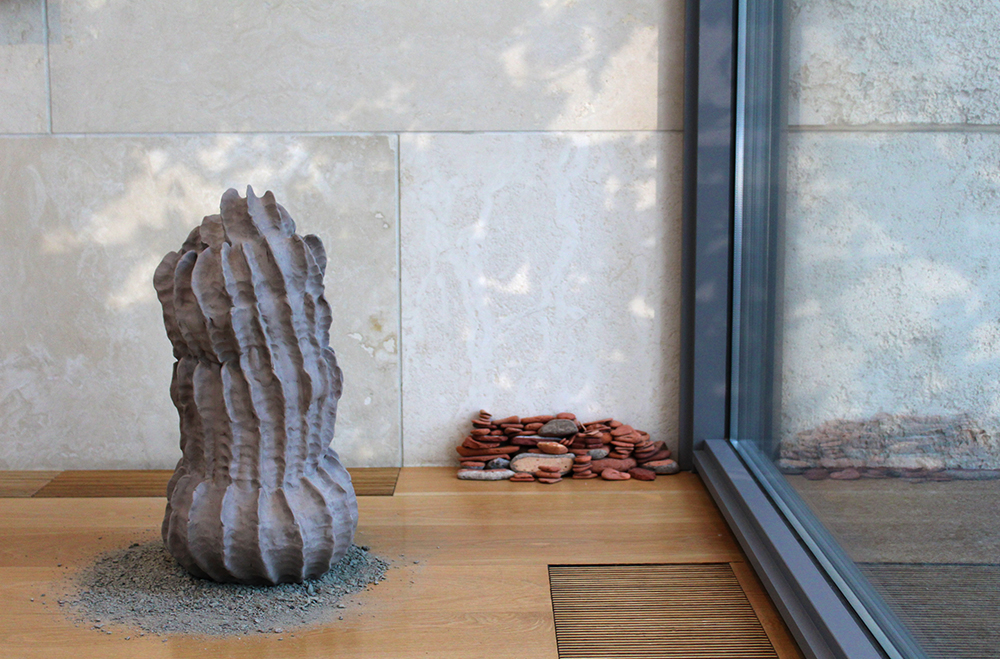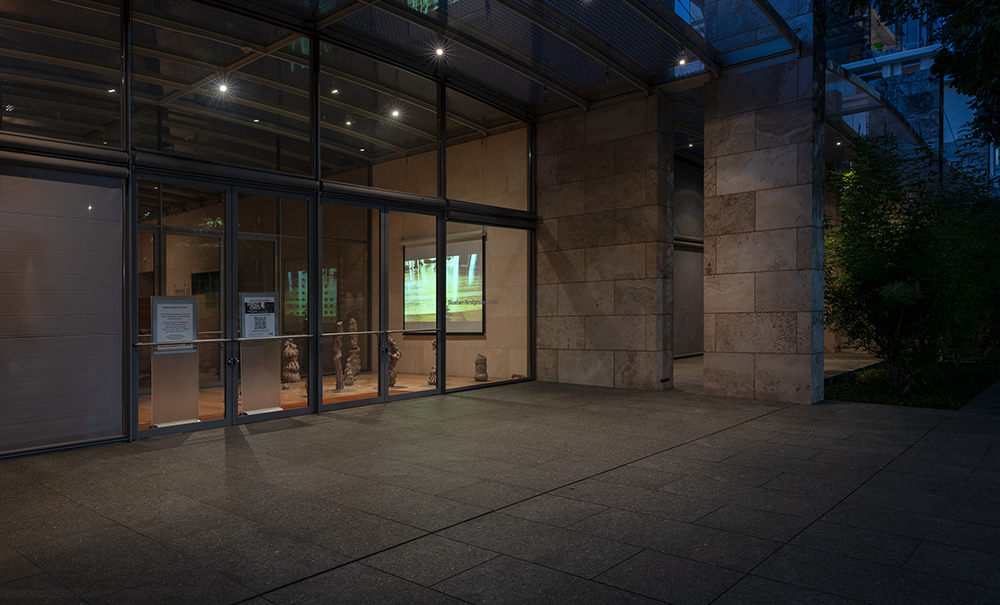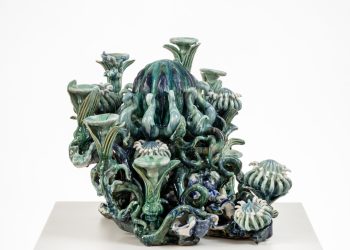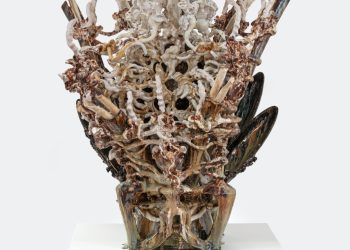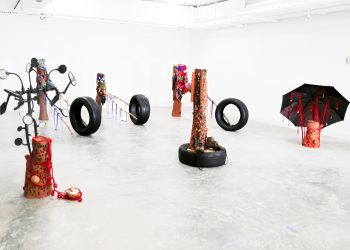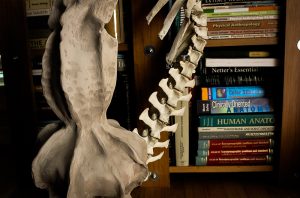
Inflexión / Inflection No. 5, 2020, Digital Photography. Unfired terracotta clay. 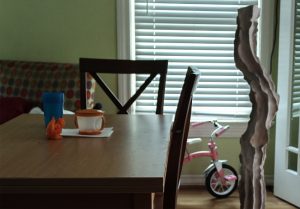
Inflexión / Inflection No. 6, 2020, Digital Photography. Unfired terracotta clay. 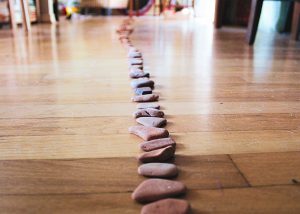
Dualidad / Duality No. 1, 2020, Digital Photography. Found objects. 84 Eroded terracotta fragments. 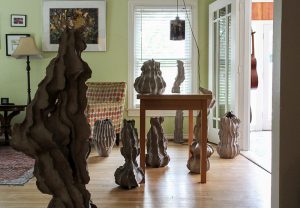
Interacciones / Interactions No. 2, 2020, Digital Photography. Unfired terracotta clay. 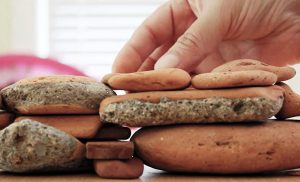
Cacti sculpture detail. 2020. Unfired terracotta clay. 51 cm x 28.5 cm x 27 cm. 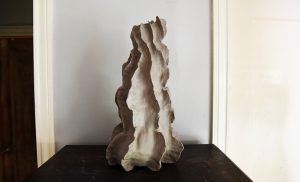
Home and Land Project, 2020. Screenshot of video projection loop: 6 min 16 sec.
Karla García: Home and Land Project, 2020
Home and Land Project is a clay-based exploration of cacti forms inspired by the desert landscape of my home at the U.S./Mexico border, and is focused on the human condition through the lens of migration and identity politics. I use terracotta clay to create organic forms inspired by the way physical or environmental obstacles alter the growth of cacti. The symbol of the cactus is not only part of the Mesoamerican cultural history iconography, it is a metaphor for our ability to survive conflict and difficulties as well. The shape of each cactus is unique and is symbolic of our lived experiences, showing growth despite adversity, hardships, or frustration. Leaving the cacti-shaped sculptures unfired creates a unique language of materiality and impermanence, as well as individuality and the human condition.
This project was initiated during an artist residency in St. Raphael, France. While at the residency, I collected eroded terracotta tile fragments that I found on a local shore of the Mediterranean Sea. These eroded shards are beautifully amorphous objects that speak of transit, lost habitats, and journeys through time and space. In my installation, the placement of these terracotta fragments in proximity to the unfired cacti sculptures poetically evokes lost histories and origins. Yet, the shards also form their own language as unassuming precious objects outside of their original context.
When installed at home and photographed, the cacti create a surreal desert landscape that connects my upbringing in Mexico and the U.S. with my present life in my home in Dallas, Texas. Furthermore, each time this project is installed as an exhibition, one is confronted with the desert landscape duality. Although a quiet and beautiful place, the desert also represents a dangerous journey for the many people who migrate through. I seek to raise these questions about migration through each installation and by documentation at home.


